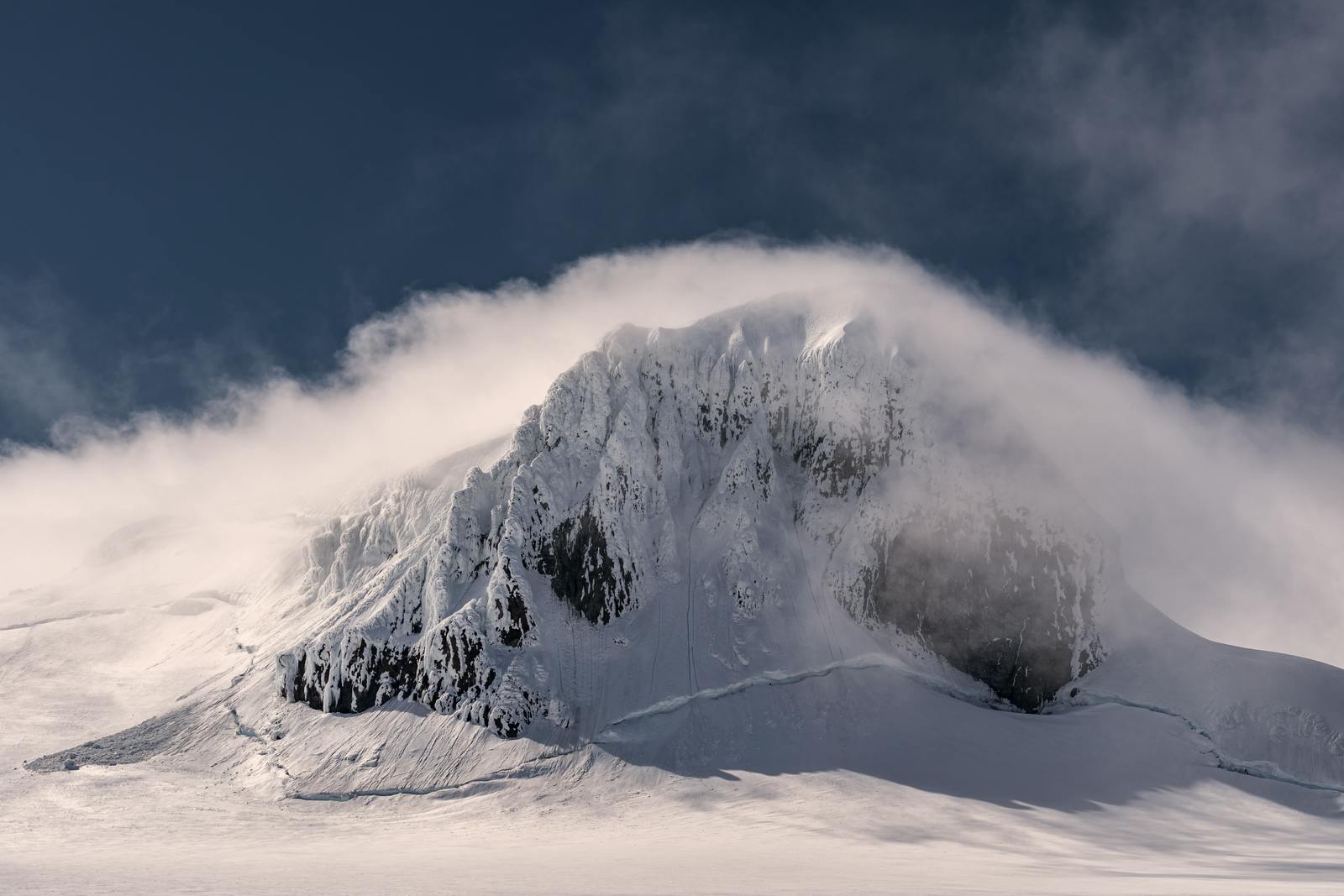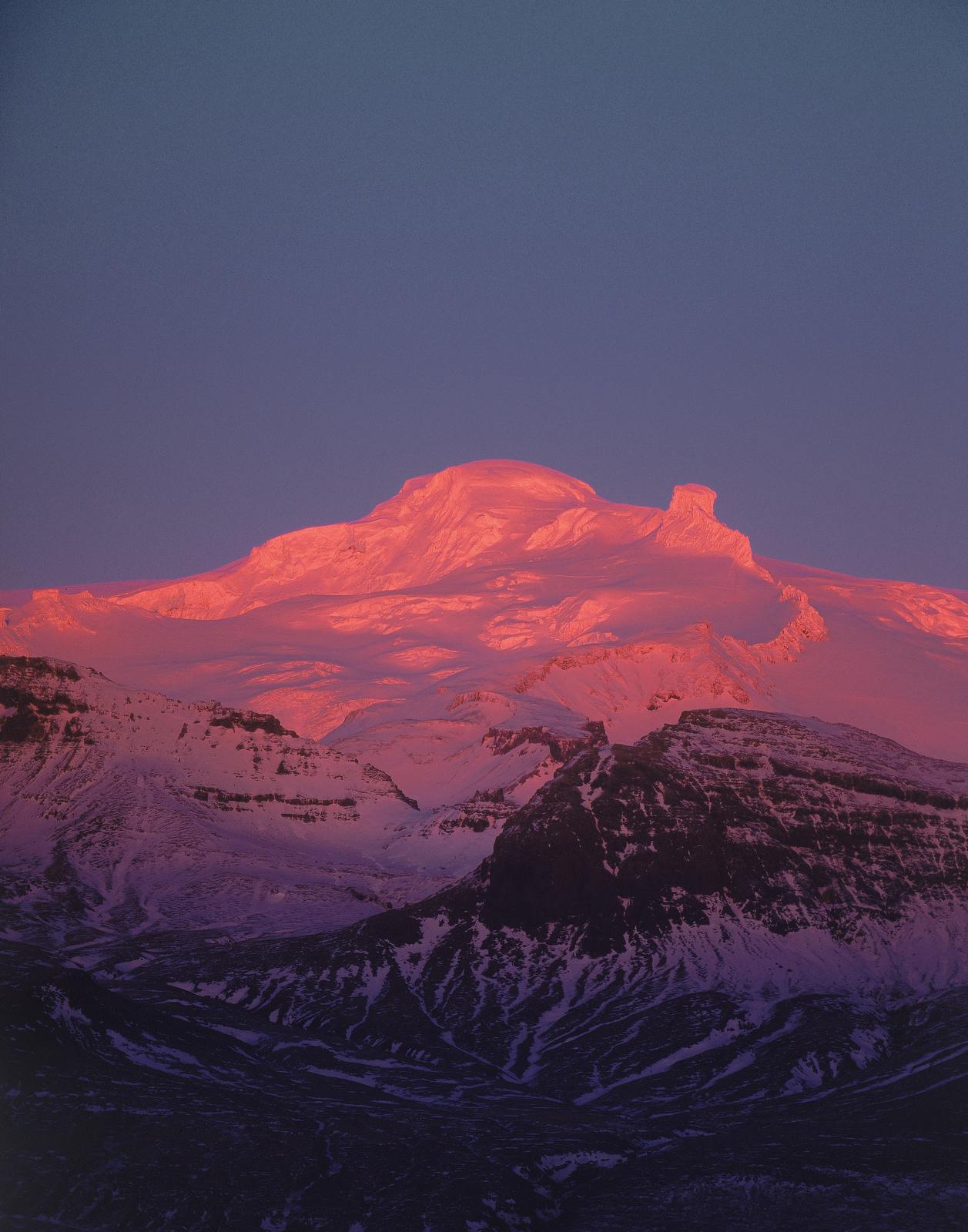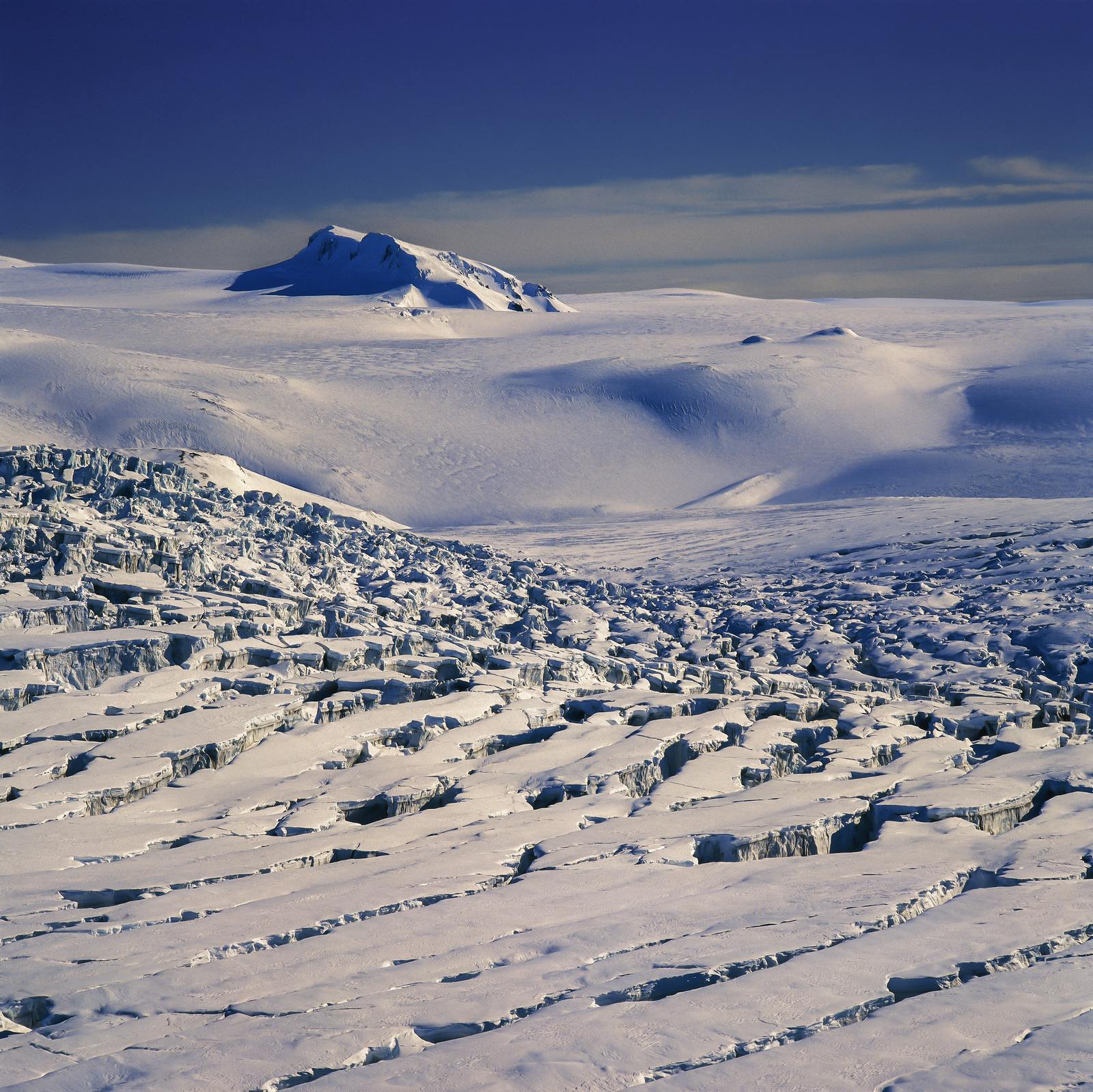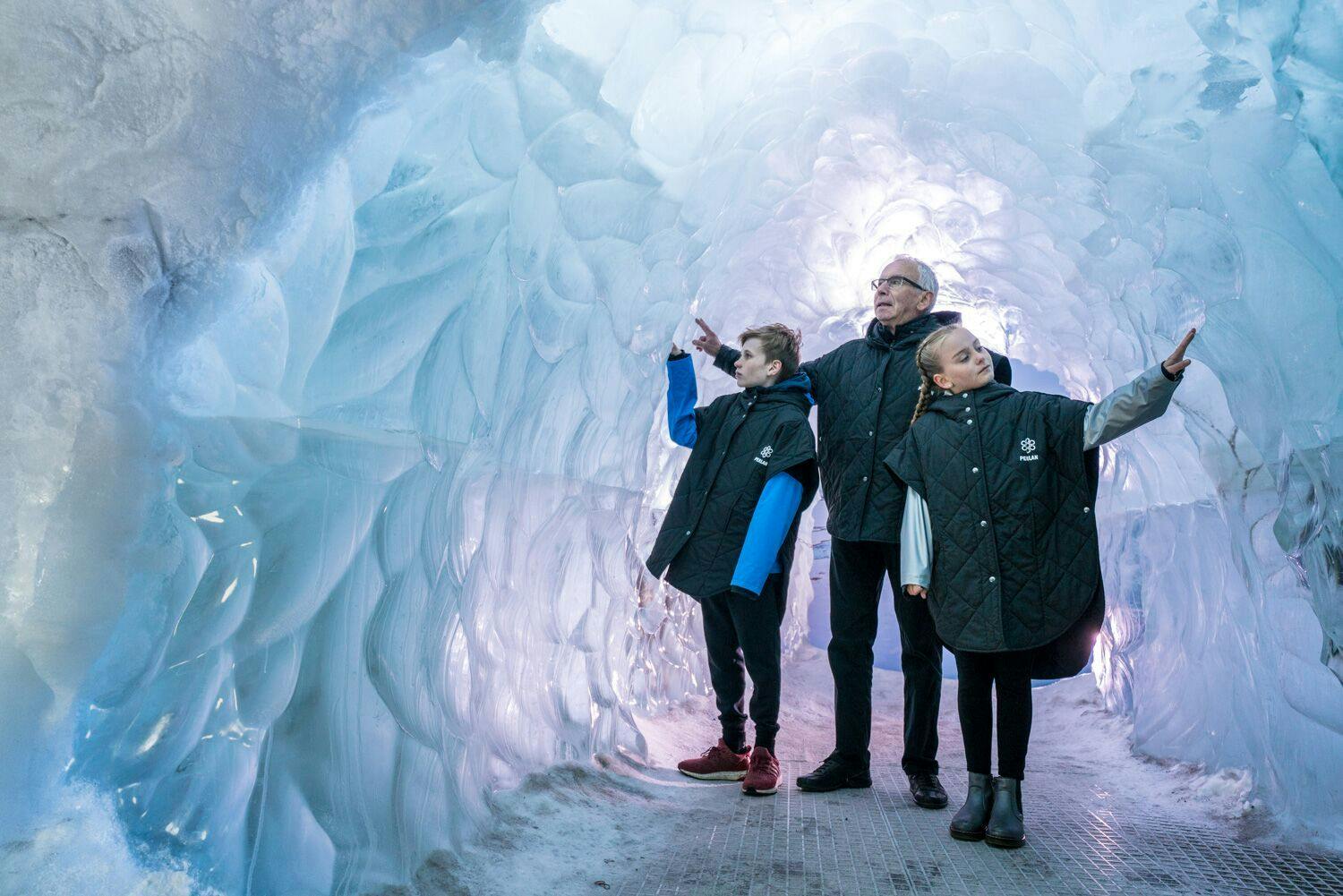
Hvannadalshnúkur, Iceland
Hvannadalshnúkur is not just another peak, it is Iceland’s highest mountain, standing tall at 2,110 metres, or 6900 feet above sea level. It is a stratovolcano and two colossal eruptions have occurred there in historical times. Located on the northwestern rim of the Öræfajökull volcano, part of the vast Vatnajökull glacier, this snow-covered giant dominates the southeast landscape of Iceland.
Pronounced “KVAH-nah-dals-hnooker”, the name might be a mouthful for non-Icelandic speakers, but it simply adds to the mystique of the mountain. Its summit offers some of the most incredible views in the country, stretching across glaciers, black sands, and distant peaks.
Where is Hvannadalshnúkur?
You’ll find Hvannadalshnúkur in southeast Iceland, within the Vatnajökull National Park, near the town of Skaftafell. On a map, it sits near the southern edge of the Vatnajökull ice cap, roughly halfway between the towns of Höfn and Kirkjubæjarklaustur.
While the peak is remote, it’s accessible by road via the Ring Road. From Reykjavík, the drive takes about 4.5 to 5 hours. Many travellers stop in Skaftafell, which serves as a base for glacier walks, hiking, and guided climbs.
The region is known for its dramatic contrasts with glaciers, volcanic craters, rivers, and black sand plains. Hvannadalshnúkur rises from this landscape like a sentinel, visible from miles away on clear days.
What to expect when climbing Hvannadalshnúkur?
Climbing Hvannadalshnúkur is not for the casual hiker. It’s a long, physically demanding glacier hike, requiring technical skills, proper gear, and the help of an experienced guide. The round-trip trek usually takes between 12 and 15 hours, depending on weather, fitness level, and trail conditions.
Along the way, climbers must navigate crevasses, snowfields, and changing ice surfaces. This is where equipment like crampons, harnesses, ropes, and an ice axe becomes essential. Due to the risks, solo climbs are not recommended. Most people join guided tours, which include all the necessary equipment, professional glacier guides, and safety training.
What is the best time of year to visit Hvannadalshnúkur?
The climbing season for Hvannadalshnúkur is short. The best time of year is from mid-April and mid-July, when snow cover is more stable and daylight is longer. Outside this window, crevasses become more dangerous, and snow bridges can weaken. Winter climbs are extremely rare and only attempted by highly trained mountaineers with extensive glacier experience.

Summer offers the safest conditions and the best chance for clear views from the summit. Even then, there’s no guarantee. Many climbers reach the top only to find it shrouded in mist.
Here are some other top glacier hikes in Iceland if you are curious to explore more options.
Weather Conditions and Forecast
One of the biggest factors in climbing Hvannadalshnúkur is the weather conditions. Iceland’s weather is unpredictable, especially in the highlands and glacier areas. Wind, fog, snow, and storms can roll in quickly, even during summer.
The summit is often cold and windy, with temperatures well below freezing, even in July. Climbers must dress in layers and be prepared for all conditions.
Before any climb, it’s critical to check the weather forecast and consult local tour operators or park rangers. If visibility is poor or storms are expected, tours may be postponed or cancelled. Safety always comes first in this environment.
Conditions can change during the hike, so guides monitor forecasts throughout the day and make real-time decisions about whether to proceed or turn back.

Why Climb Hvannadalshnúkur?
Climbing Hvannadalshnúkur isn’t about ticking off the highest peak. It’s about stepping into a world where nature still rules completely. You’ll walk across one of the largest glaciers in Europe.
You’ll see deep crevasses carved by centuries of ice movement. You’ll test your endurance in a harsh but beautiful landscape. And if you're lucky, you'll stand at the top of Iceland, looking out over an island shaped by fire and ice.
Prepare and Learn more about Glaciers in Iceland
Before your climb, explore the Glaciers Exhibition at Perlan to understand how Iceland’s glaciers like Vatnajökull form and change.
The Glacier and Ice Cave exhibit is especially relevant. It offers a detailed look at how glaciers, such as Vatnajökull, form, move, and shape the landscape. You'll also get to walk through a real indoor ice cave, which prepares you for what you’ll see on the mountain.

Perlan’s Volcano and Earthquake exhibit helps you understand the deeper forces at work beneath the glaciers. Since Hvannadalshnúkur sits on top of a volcano (Öræfajökull), knowing its history makes your climb more meaningful.
FAQ
How do you pronounce Hvannadalshnúkur?
It’s pronounced “KVAH-nah-dals-hnooker,” with the stress on the first syllable.
How high is Hvannadalshnúkur?
The mountain stands at 2,110 meters (6,921 feet), making it the highest peak in Iceland.
Where is Hvannadalshnúkur on a map?
It’s in southeast Iceland, on the Vatnajökull glacier, near Skaftafell in Vatnajökull National Park.
How long does it take to climb Hvannadalshnúkur?
The round-trip climb takes about 12 to 15 hours and requires glacier travel.
Why visit Perlan before climbing?
Perlan helps you understand glaciers, volcanoes, and Iceland’s natural forces. It adds depth to your climbing experience.








